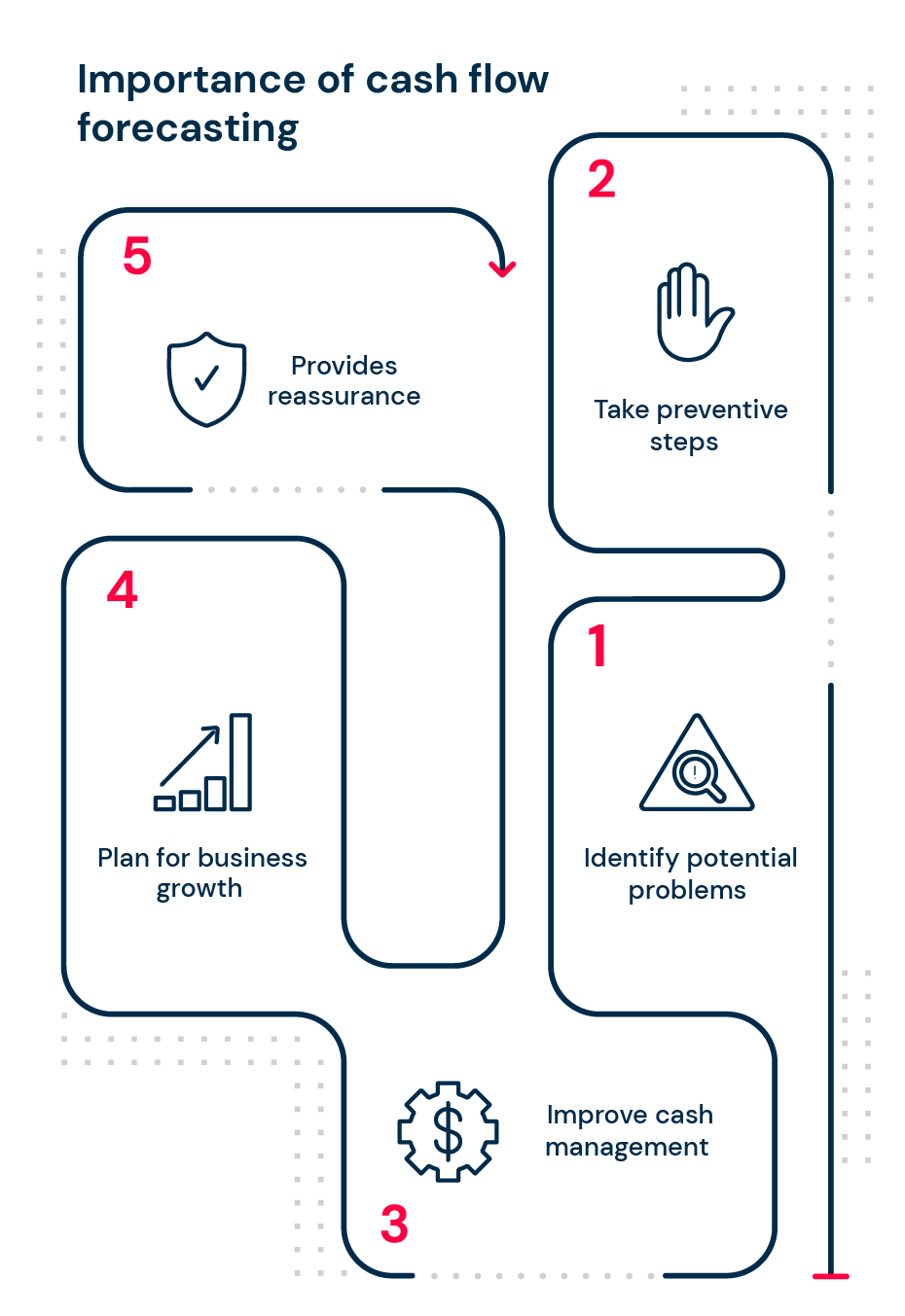For treasurers, cash flow forecasting is integral to a business’s liquidity risk management process. In fact, as per a survey, 59% of treasurers believe that the importance of cash forecasting will increase in 2022.
Importance of cash flow forecasting
For treasurers, cash flow forecasting is integral to a business’s liquidity risk management process. In fact, as per a survey, 59% of treasurers believe that the importance of cash forecasting will increase in 2022.
Forecasting cash flows helps businesses assess their capabilities, manage outstanding debts and guide future investments. It can be prepared for different time periods- daily, weekly or monthly. Essentially, it tells us if there is enough money to run the business or expand it. But what exactly does a cash flow forecast help a business with?
Here are a few key reasons why cash flow forecasting is important:
1. Identifying potential problems
If there’s anything that the pandemic taught businesses, it’s to always consider the ‘worst case scenario.’ Cash flows can be unpredictable and any related issues can cause a business to fail. Planning helps businesses foresee obstacles, so it doesn’t take them by surprise.
Example: It’s easier to keep track of trends in overdue payments if the business knows who the late payers are each time. One can assess the impact on the bottom line and take steps to curb this issue.
2. Taking preventive steps
Forecasting lets businesses to gain a clear view of future cash requirements. It can tell you if your business has negative or positive cash flow at a given time. By foreseeing a cash flow shortage, its possible to take steps to mitigate potential impact.
Example: Keeping the cash flow shortage in mind, companies can negotiate better terms with suppliers, accelerate collection from customers, or even prepare to draw on a line of credit from the bank.
3. Improving cash management
Different businesses have different cash-related pain points. A cash flow forecast helps a business keep track of the inflow and outflow of cash. It can help them to keep a check on whether they are overspending or under-budgeting, while tracking the cash balance.
Example: A manufacturing enterprise might find it difficult to keep track of cash spent across many different operations. The costs could stem from building new products, sourcing raw materials, labor, machinery, short-term contracts – all these lead to cash outflow. In contrast, service-based companies might struggle to keep track of invoices and timely payments. Maintaining forecast vs. actual scenarios can help gain an in-depth understanding of the company’s cash position and overall financial health.
4. Planning for business growth
Forecasts can help plan a company’s future trajectory. Decision makers can have a headline view of cash reserves and make decisions on credit, investments and other such opportunities.
Example: If a business foresees a cash deficit, this may inhibit their ability to fund other activities such as marketing or salary payouts. Here, a forecast can help make the decision between whether growth should be accelerated or if the current path of the business should be sustained.
5. Providing assurance
Cash flow forecasts give investors an opportunity to review the financial health of a company. It provides stakeholders clarity about the future and the actions needed to generate results.
Example: If you’re seeking funding, your lender will want to see your forecast to determine your future ability to repay the loan.

Conclusion
Companies should use cash flow forecasts as a tool to understand their business operations better. Though currently, cash forecasting is spreadsheet dominated at the moment, leveraging digital or new age treasury solutions could help with data precision and accurate forecasting. Read our new eBook on the best practices for cash flow forecasting to know more.
Other resources

Blocked! Obstacles faced in making treasury automation a reality
The speed of digital transition in the recent years has been unprecedented, with a few technology leaders accomplishing 18-month transformation plans in almost over a weekend.

Money matters: why bank connectivity is a boon for treasurers
Any good treasurer knows that the ball is always rolling. As an engaged treasurer, it’s essential to keep tabs on the company’s financial health anytime, anywhere.

The speed of digital transition in the recent years has been unprecedented, with a few technology leaders accomplishing 18-month transformation plans in almost over a weekend.

Any good treasurer knows that the ball is always rolling. As an engaged treasurer, it’s essential to keep tabs on the company’s financial health anytime, anywhere.